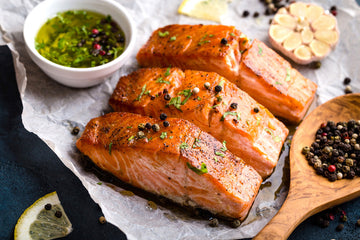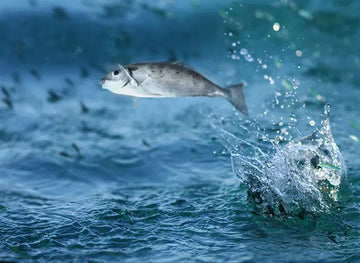What is yield?
The amount of final product (outcome) generated from the raw materials utilized is referred to as yield. By examining the yield %, we may tell whether there has been a gain or loss in the product.
If you buy 1kg of whole fish how much can you use?
If you buy 1kg of whole fish (Basa) you will get 270g of Basa fillet after the removal of skin, bones, fat and carcasses and that is known as the yield of a whole fish and it varies according to the types of cuts.
How can you figure out the Basa fillet yield percentage?
Assuming that, if 1kg of Basa is taken for filleting, out of this we will get 270g of fillet after processing then the yield obtained from the raw material will be 27%. This yield percentage can be estimated practically by a general formula as mentioned below:
Yield%= (final product/ raw material) ×100
For example
Raw material taken for filleting =1000g
The final product obtained after processing (Boneless & Skinless Basa fillet) =270g
Yield = (270/1000) ×100= 27%
How is the yield inversely related to the product's price?
For Basa Fillet:
For example, 270g of Basa fillet is produced from 1 kilogram of Basa (Raw material). Because to produce a boneless, skinless fillet, roughly 80g of skin, 50g of fat, and 600g of carcasses are eliminated as waste during butchery.
For Basa Fry Cut:
After the removal of the fat, intestine, and Fins from 1 kg of Basa (raw material), 630g of fry cut is left behind, and since the head and tail are not included in this form of cut, the yield percentage is 63%.
For Basa Curry Cut:
After the removal of fat, intestine, and fins from 1 kg of Basa (raw material), 680 g of curry cut is left, and the yield percentage is 68% since the skin, bones, and tails are included, when compared to all other cuts curry cut has a high yield because utilization of the material is more and wastage is very less in this type of cut. The head can also be included, according to the demands of the client. Yield varies depending on the composition (for curry cut without head 68% yield will acquire where out of 1 kg of whole fish 680g of product is achieved and for curry cut with head 75% yield will be obtained where out of 1 kg of whole fish 750g of the end product is obtained).
This explains why the fillet yield percentage is lower than that of the fry cut and curry cut. The cost and yield have an inverse relationship with one another.
For instance, 1 kilogram of Basa (raw material) costs 170 rupees. We will obtain 270g of fillet from this, hence we will require 3.7kg of raw material, which costs Rs. 629, to make 1kg of the fillet. Following processing, the price for 1 kilogram of the fillet is 629. This explains why the price of the product increases when the yield decreases and vice versa.
Does yield differ from one fish type (Species) to Other?
Yes, the yield will differ from one fish type (Species) to another because for every fish muscle composition, structure, and bone arrangements will differ which leads to changes in yield.
Some approximate Yield % of fillets for different types of fishes has been shown below for your reference.
|
Sl.No |
Name of the Fish |
Cut Type |
Yield % |
|
1 |
Basa (Pangasius) |
Boneless Fillet |
27% |
|
2 |
Gift Tilapia (Jalebi) |
Boneless Fillet |
25% |
|
3 |
Snakehead (Murrel) |
Boneless Fillet |
34% |
|
4 |
Asian Seabass (Koduva) |
Boneless Fillet |
40% |





